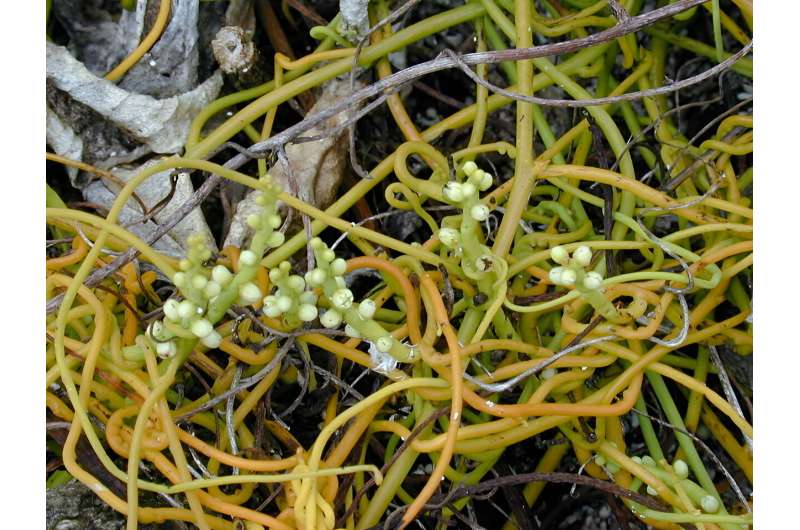This article has been reviewed according to Science X's editorial process and policies. Editors have highlighted the following attributes while ensuring the content's credibility:
fact-checked
trusted source
proofread
Researchers clarify cryptic differentiation within enigmatic hemiparasitic love vine Cassytha filiformis

The widespread hemiparasitic Lauraceae genus Cassytha currently contains 19 described species, one variety and four forms. This genus is controversial and has not been satisfactorily resolved. Cassytha filiformis is cosmopolitan in tropical and subtropical regions. It is currently the only species reported from China.
Accurate species delimitation has been a great challenge for biodiversity conservation practice, and many species may have already gone extinct before being recognized and described, especially for morpho-hyperspecialized parasitic, hemiparasitic plants, where it is very difficult to accurately capture the species.
In a study published in the Journal of Systematics and Evolution, researchers from the Xishuangbanna Tropical Botanical Garden (XTBG) of the Chinese Academy of Sciences and their collaborators examined Chinese Cassytha samples that are currently placed in C. filiformis, as well as several related members of the racemose group, to investigate the phylogenetic and evolutionary history of the genus in the region.
Using integrated means such as phylogenetic analysis, morphological trait statistical analysis, and species distribution simulation, the researchers investigated whether there are cryptic species of Cassytha filiformis within China and neighboring regions.
The results of the phylogenetic analysis showed that C. filiformis formed two well-supported monophyletic lineages, and the morphological analyses revealed that the two lineages differed significantly in both inflorescence stem thickness and fruit type ratio. Species distribution simulations showed that different environmental factors influenced their distributions.
Moreover, the divergence time of the two lineages was inferred to be around the Early Miocene, suggesting that the divergence of the cryptic hemiparasitic love vine species may have been related to new ecological opportunities and host diversification brought about by the East Asian monsoon in the Early Miocene.
"Our study revealed the cryptic diversity of the enigmatic hemiparasitic love vine Cassytha filiformis in China and neighboring areas. It provides new evidence for the widespread existence of cryptic species in parasitic plants," said Li Jie of XTBG.
More information: Zhi‐Fang Liu et al, Dense infraspecific sampling reveals cryptic differentiation in the enigmatic hemiparasitic love vine Cassytha filiformis (Lauraceae), Journal of Systematics and Evolution (2024). DOI: 10.1111/jse.13069
Provided by Chinese Academy of Sciences



















